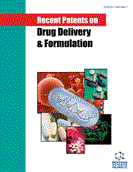Abstract
Background: The aim of the present investigation is to formulate and optimize oral sustained release matrix tablet of highly water soluble drug Tramadol HCl and to evaluate the effect of varying concentration of hydrophilic and hydrophobic polymer on drug release, based on a survey done on the recent patents of Tramadol HCl (US7374781, CA 2479252) and sustained release matrix tablets.
Methods: The tablets were prepared by double granulation process, by melt granulation and wet granulation technique using Carnauba wax (CW) and HPMC K100 as release retardant.
Results: Pre and post compression factors were evaluated and all the parameters were found within the limit. The drug release data were subjected to different models in order to evaluate release kinetics and mechanism of drug release. The prepared formulations showed drug release in the range 100±2% in 6hrs, 7hrs, 8hrs and 9hrs and upto 12 hrs respectively. The optimized tablet having 25% CW and 20% HPMC showed sustained drug release pattern. Hydrophilic matrix of HPMC alone could not control the Tramadol release effectively for 12 h whereas when combined with CW could slow down the release of drug and can be successfully employed for formulating sustained-release matrix tablets. Similarity factor, f2 shows the test and reference profile are identical.
Conclusion: Double granulation technique with CW and HPMC K100 proved as a better technique for sustaining the drug release from the matrix tablet.
Keywords: Tramadol HCl, HPMC, CW, FT-IR, DSC, matrix tablet.
 17
17 4
4















